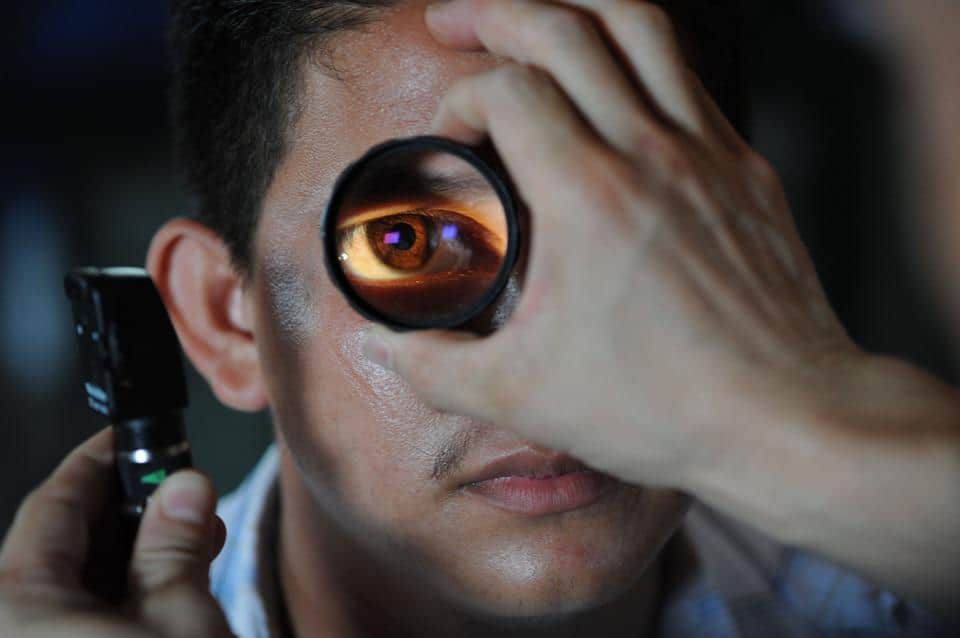https://cdn.pixabay.com/photo/2013/03/09/04/09/optometrist-91751_960_720.jpg
Vision insurance is a very affordable employee benefit, and your employer may be paying for it on your behalf. It is also possible that you are responsible for a portion of the insurance premium. Look at your paycheck, and you may find that deduction there. Even if you have 20/20 vision, it is still useful since it will cover your annual eye check-up.
Eye exams are very important. During a comprehensive eye exam, doctors evaluate the health of the blood vessels in your retina. This also happens to be a good indicator of the health of the blood vessels throughout your body. Detection of diabetes, high blood pressure, high cholesterol, and even some forms of cancer happen during an eye exam.
Assuming that you are covered by a vision insurance plan, most of these plans will cover 100% of your eye examination costs. There are some exceptions where there may be deductions of $10 to $20. Most reputable eye care organizations are in-network providers for most vision insurance plans. It is important to use an in-network provider since the out-of-network benefits don’t cover a lot of the vision plan benefits.
What Else Is Covered Under Vision Insurance?
The frequency with which you can get a new pair of glasses differs from plan to plan. It is common for plans to have a frequency of 12 to 24 months. The cost of your glasses, however, may not be fully covered. There are small deductibles for the materials used.
100% coverage is present when it comes to standard corrective lenses. Standard lenses are the most basic lenses. Bifocals, trifocals, and polycarbonates are also considered basic lenses. Corrective lenses come with a lot of other features as well. Scratch resistance, anti-glare filters, and reflective coatings are a few of them. These are considered to be “added features.” Vision insurance plans will not cover these, and you will be responsible for the added cost.
The insurance provides you with a lump sum allowance when it comes to frames. $130 is a standard figure. If you purchase a frame higher than the allowance, you will have to pay the difference. Not entirely, though. Most insurance plans give you a discounted rate on that additional value.
For contact lenses, you need to make a choice. You can either choose to have your contact lenses covered or your glasses. The allowance for contact lenses is comparable to the allowance for glasses frames. And these can be claimed once a year.
Almost any insurance service provider does not cover LASIK surgery. However, you can get a discount on those services through your insurance plan provider.
What About FSA Funds?
FSA stands for Flexible Spending Accounts, and it is a type of employee benefit. An FSA lets you put money into a special account that your employer holds. The funds there can be used to pay for medical, dental, vision, and dependent care. It can also be used to pay for some over-the-counter medications. The money that goes towards this fund gest deducted on a pre-tax basis. That means that you save the tax component on all those payments.
You can sign up for an FSA during an annual open enrolment or if you are newly eligible for benefits. The maximum FSA contribution limit for 2022 is $2850. You need to decide on the contribution at the beginning of the year. This will be deducted evenly from your paycheck every month. You can not change this amount in the middle of the year.
Therefore, it is important to estimate how much out-of-pocket expenses you may have by looking at your previous year’s spending. FSAs do have a rollover benefit of around $500. Some even have a grace period to use the benefit after the year is up. Your FSA provider will give you a debit card with which you can pay for qualified expenses. You may even submit claims separately for reimbursement. For that, you need to have all the itemized receipts.
How to Take Advantage of HSAs for Vision Care
An HSA is a health savings account. The contribution limit for this is $3650. There are generally three types of FSAs. The health FSA, limited purpose FSA, and dependent care FSA. The one you are interested in is the Limited Purpose FSA. It is meant for people who are enrolled in a high-deductible HSA plan. It does not cover medical costs but does cover vision and dental care.
Thus, with the help of vision insurance, FSAs, and HSAs, you can hope to cover all of your vision care costs.
The Editorial Team at Healthcare Business Today is made up of skilled healthcare writers and experts, led by our managing editor, Daniel Casciato, who has over 25 years of experience in healthcare writing. Since 1998, we have produced compelling and informative content for numerous publications, establishing ourselves as a trusted resource for health and wellness information. We offer readers access to fresh health, medicine, science, and technology developments and the latest in patient news, emphasizing how these developments affect our lives.








